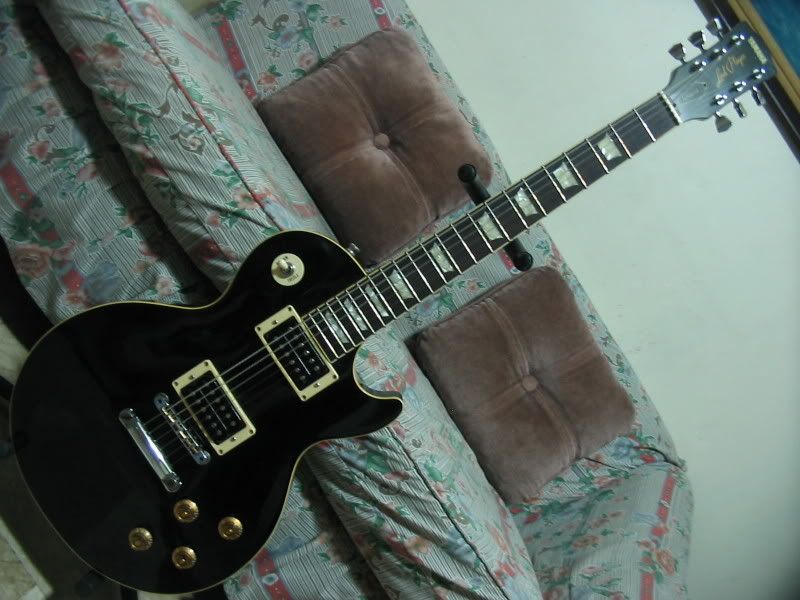Jan 14, 2007 I need some information regarding Yamaha Studio Lord 1974 guitar. (Lawsuit Les Paul Copy) - Do they come with serial number or are they the ones manufactured without the serial numbers? Any information about their specs? - wood, pickups, bridge, neck? I badly need the information - thanks!
Recent changes in the new version 4.3.19-20: - Fixed a problem with variable 0AB1, which was determined incorrectly in missions; - Updated SDK version. CLEO v4.3.20 for GTA San Andreas. The release of the new version CLEO 4.3.20 took place on. This is the latest version of the libraries CLEO at the moment - on. Gta san andreas android yandex disk download.
I have never held one of these in my hands, because I prefer the double-cutaway profile of the SG & SBG series. That said, there are reasons that these are referred to as 'lawsuit' guitars. Gibson found that it was easier to sic their lawyers on Yamaha than to try to compete with the quality/price ratio being offerred by their competitors. You will find that these guitars were made by people who care, and it shows in the construction, fit, and finish. Gibson at that time was not delivering quality that justified the prices they were charging.

Some will tell you that that is still the case.:p The pickups on the lower-numbered Yamaha models were good, but not great. A lot of them had a 3-point mounting system that allowed you to keep the face of the pup parallel to the strings as you adjusted the height. My own SBG1000 guitars have this feature, and I like it enough that I modified the DiMarzio pickups to retain this feature.
Bear in mind that the stock pups are good. When I bought a second 1984 SBG1000, I kept it completely stock for years before I did any mods on it. The stock pups were a bit more clear and trebly than the stock Gibson pups of the same vintage. Any Gibson LP I compared at the time sounded dark and muddy relative to the SBGs.
The Studio Lords would have the same electronics as the SBGs as far as I know. The switches and pots are usually good, but seem to have been inconsistent in quality. The SBG1000 that I bought new in 1984 still has the original controls. An identical 1984 SBG1000 guitar (even the same black colour) is now a candidate for new pots due to some apparent weakness in the push-push switches built into the pots. The push-push action of the coil-tap switches (like a ball-point pen) was one of the features that helped me to choose an SBG over a LP on that day in 1984 when I went shopping. I still find that I have to be careful not to throw the knob of a push-pull switch across the room. On the Yamahas, I just slap that sucker, and the switch changes settings.
Unfortunately, some years had push-push; some years had the more common push-pull. You need to examine the descriptions or ask about it to be sure. The top-end models have truly stunning detail work in the markers and binding, using real mother-of-pearl and/or abalone pieces.
The lower models have plastic parts in these areas, but fit and finish is uniformly excellent. Unless specified otherwise, all bodies and necks are mahogany.
Ddx3216 software download for windows 7. The converters and supporting analog electronics are just excellent and all I/O is balanced. Many have a software mixer included to montior while recording so again, your mixer might not even be needed at all. The best quality sound I've been able to find in a computer sound card is the Lynx line of cards.
The bodies are topped with a thick (at least 1/2') slab of nicely-grained maple. Back in the day, quilting was considered to be sign of inferior wood (it comes from parts of a tree that have been severely stressed) so you are only likely to see flame patterns in the grain. Most of the show-wood is clear, straight grain, selected for the expected tonal properties rather than appearance. I did tell you these guitars were made by people who care, yes?
More fit & finish stuff: Yamaha fret dress is always, always, always first-rate. Then, and now, I have never seen a Yamaha guitar that had sloppy fret installation or ragged ends. One reason I selected my SBG over an LP Custom was that every LP in the store had burrs on the ends of the frets, and the neck finish was smeared onto the binding. Yamaha does better in this regard, then and now. Gibson still has serious quality control issues. The guitar I bought back in '84 was black, and so is the second one I bought because I liked the first one so much. Since then, I have seen many sunbursts and transparent finishes.
All are flawless. Yamaha is one of the few builders that show such consistently high quality that I will buy online.
I have more reason to worry about the seller's assesment of how the guitar has been cared for after purchase than about the out-of-the-box condition of the guitar when it was new. I have 6 old Yamaha guitars.
The only one I personally auditioned before I bought it is the SBG1000 I bought new in 1984. I still have it. Plus another identical one that I bought on eBay four years ago. And the rest were bought sight-unseen, based on the descriptions of others. In one case, the seller understated the amount of abuse the guitar had been subject to, but even that time, I got a really great-sounding guitar. Even a beat-up Yamaha is likely to be a good player. Cosmetics: As mentioned, not all of these guitars have real MOP or abalone in the bindings or markers.
